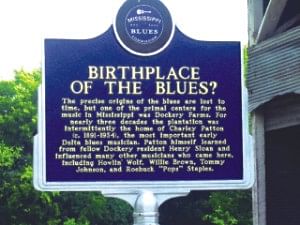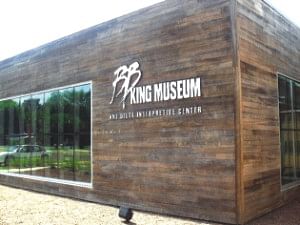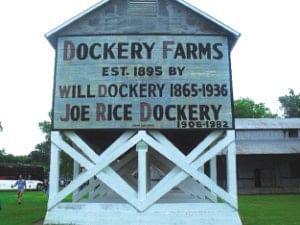|
Reflections
At the Mississippi Delta - II
The heat was getting worse by the moment in Cleveland, Mississippi. In fact the whole state was going through a heat wave, the worst of its kind in decades. The heat was so harsh that even the locals were having a hard time coping with it. Not many were seen strolling outside on the streets. Most just preferred to stay indoors, where it was cooler. For us put up at the Delta State University dormitories, it was like living in a weird region undergoing extreme type of weather; freezing cold inside the dorm rooms and scorching heat outside on the streets. However, on particular day, despite the high temperature, we were all looking forward to the field study that we were all being taken to. Finally, we were going to study about the Blues, the music that was born by the Mississippi River decades ago.
Elita Karim
 |
| One of the Blues Trails in Mississippi. |
As soon as we picked up our luggage at the Jackson Airport, Jackson, Mississippi, Fabio, Hassan and I, the three international participants in the workshop - The Most Southern Place on Earth: Music, History, and Culture of the Mississippi Delta - we felt quite lost. The feeling was momentarily gone once we found Michelle Miles, another participant form Utah, waiting to take us to the campus, which was a two and half hour, drive away from the airport. We felt lost, once again, when we realised that we had actually taken a different route to the campus -- Highway 61 -- which took us at least double the time to reach the dorms. Little did we know then that we were actually driving on the famous Highway 61, a famous landmark in the Blues history. Along with the Highway 61, Highway 49, the crossroads, the platform of the Clarksdale Railway Station, Beale Street in Memphis and many more have been marked as landmarks for Blues Markers.
According to historians, it all began in the Dockery Farms, a 10,000 acre cotton plantation and sawmill on the Sunflower River between Ruleville and Cleveland, Mississippi. This is where the Delta blues was born. Blues musicians residents at Dockery included Charlie Patton, Robert Johnson and Howlin' Wolf. The property was added to the National Register of Historic Places in 2006. To me, Dockery Farms did not look too impressive at first glance. It was acres and acres of green and a few massive, abandoned buildings, which probably used to be filled with workers at one time. But as the stories began to unfold about how the blues actually came into being, the Dockery Plantations / Farms seemed to be an epitome of the blues.
 |
| Many of the civil rights movements' documents are displayed at the
BB King Museum. |
The blues have been influenced by several elements -- African roots, field hollers, ballads, church music and rhythmic dance tunes called jump-ups. Slavery being rampant back in the days, the African American workers were oppressed and mistreated on a regular basis. They were overworked and one of their major occupations in the Delta was cotton picking. Many of the blues songs find their roots in the expressions and outbursts of these workers, while carrying heavy bags of cotton under the scorching sun.
According to the online resources of the history of blues, it was in 1911-14, that the blues form of music was first popularised by the black composer WC Handy (1873-1958). However, the poetic and musical form of the blues first crystallised around 1910 and gained popularity through the publication of Handy's "Memphis Blues" (1912) and "St. Louis Blues" (1914). Instrumental blues had been recorded as early as 1913. During the twenties, the blues became a national craze. Mamie Smith recorded the first vocal blues song, 'Crazy Blues' in 1920. The Blues influence on jazz brought it into the mainstream and made possible the records of blues singers like Bessie Smith and later, in the thirties, Billie Holiday.
Interestingly enough, the blues form of music was closely related to rights movement in the state where thousands of blacks demanded for equal rights and integration in public rather than practicing the age-old tradition of segregation. At the Civil Rights Museum, which used to be the motel where Dr. Martin Luther King was shot dead in the 1950s, the birth of blues music is documented as a common expression of the millions of African American people fighting for their rights. At the BB King museum, amidst the many black blues singers, their instruments and poignant tales of cotton picking and the discrimination that they faced while growing up occupy a very significant place in the history of the racial war.
The history of the Mississippi Delta proves that music indeed has the power to initiate thoughts within people, motivate them to work together against injustice and finally win freedom.
 |
| Dockery Farms - the birthplace of the Blues. |
Copyright
(R) thedailystar.net 2010
|

